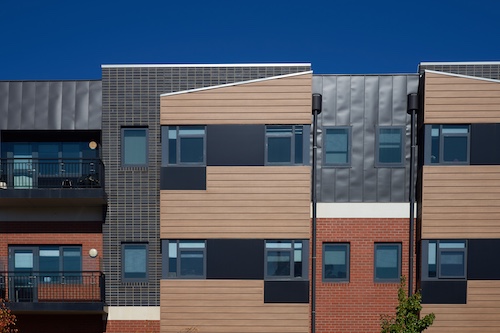How economic occupancy can help you maximize rental income
Contributed by Tom McLean
Sep 15, 2025
•4-minute read

To make money as a landlord, you need tenants. But maximizing your income as a landlord depends on more than just finding tenants to live on your property. It requires optimizing economic occupancy, which shows how much of your potential rental income you’re collecting. Calculating your economic occupancy can help you identify revenue leaks and improve the performance of your real estate investment.
What is economic occupancy?
Economic occupancy compares the rent you’re collecting with the potential rent you could be making. In well-managed rental properties, this economic occupancy rate is 90% or higher. A ratio below 90% suggests underlying management issues.
Economic occupancy vs. physical occupancy
Physical occupancy measures what percentage of your rental units are occupied by tenants – essentially, how full your property is and whether you have any vacancies. It’s a helpful gauge of demand and leasing performance.
Economic occupancy measures how much rent you’re collecting compared with the gross potential rent, which is the maximum amount of rent you could collect from a property. It’s used to assess portfolio profitability and identify potential revenue leaks.
How do you calculate economic and physical occupancy?
Here are the basic physical and economic occupancy formulas:
Physical occupancy rate (%) = Occupied units (period) / Total rentable units (period)
Economic occupancy rate (%) = Actual rent collected (period) / Gross potential rent (period at market, 100% occupancy)
Monthly physical and economic occupancy calculation
Imagine you have a rental property with four units. Standard rent for each unit is $1,000 a month. Three units are occupied, and one is vacant this month. With 25% of the property vacant, your physical occupancy is 75%.
If all tenants are paying full market rent, the economic occupancy is the same as the physical occupancy. For this example, let’s say that one of the tenants has a discounted rent of $800 as part of an introductory deal.
To calculate the economic occupancy, you must first add up the total rent you collect for the month.
$1,000 + $1,000 + $800 = $2,800
Next, divide the total rent collected by the total rent you could collect if all units were rented at the market rate.
$2,800 / $4,000 = 0.7 or 70% economic occupancy
This example shows how to calculate physical and economic occupancy monthly, but the same formula can be applied to determine the yearly occupancy rates.
Yearly physical and economic occupancy calculation
To start, calculate your maximum yearly occupancy by multiplying the total maximum monthly income by 12.
$4,000 x 12 = $48,000
Then factor in your physical occupancy. For this example, we’ll say that on average, one unit was vacant for 4 months.
$48,000 – ($1,000 x 4) = $44,000
$44,000 / $48,000 = 91.6% physical occupancy rate
Next, we’ll factor in the discounted rent given to one renter. This renter received $200 off rent for three months, or $600 in concessions.
$44,000 – $600 = $43,400
$43,400 / $48,000 = 90.5% economic occupancy rate
As you can see, the discount had a minimal impact on the yearly economic occupancy rate. Another factor that would reduce this rate is if a tenant stops paying rent, which would leave you with bad debt you can’t collect.
What does it mean if my economic occupancy is under 90%?
The key metric for economic occupancy is 90%. That level suggests the property is well-run, prices are fair, and tenants are satisfied. While 100% economic occupancy is rare, it should be the goal.
Every business, including rental properties, experiences periods with lower income. An economic occupancy rate of less than 90% for a few months or a year is unlikely to spell ruin for you as a landlord.
While this is not always in your control, here are some reasons why your occupancy can dip and what you can do to address it.
Rent too high
High rent can reduce your occupancy rate by discouraging new tenants from moving in and motivating current ones to leave. If you suspect your rent is too high, compare what you charge with the rent for similar properties nearby. While reducing the rent reduces your potential rental income, it could raise your overall rental income by helping you fill vacant units.
Too many vacancies
Too many vacancies will reduce your baseline occupancy rate, limiting the amount of rent you can collect. For example, if 30% of your units are vacant, there is only so much rent you can collect from the other 70%. Research your market’s average vacancy rate to see if vacancies are the problem. If so, work on improving your marketing, maintenance, and tenant relations.
Too many incentives
Some landlords offer incentives or concessions, such as a temporary discount on the rent. While this can be a great way to attract new tenants, too many of them can lower your economic occupancy rate and hurt your profitability. Before offering concessions, see if you can fill units without them. You may be surprised at how well your property can attract tenants at market rent.
Tenants aren’t willing or able to pay
Sometimes economic occupancy rates dip because tenants are unwilling or unable to pay their rent. The best way to prevent this is through thorough tenant screening. Before approving a rental applicant, run a criminal background check, review their eviction history, and check their credit.
If you still end up with a tenant who refuses to pay rent or falls on hard times and can’t pay, consider working out a repayment plan or directing them to financial assistance resources. If these options fail, you may need to resort to eviction so you can fill the unit with a paying tenant.
The bottom line: Economic occupancy can help measure profitability
Measuring economic occupancy enables you to identify the rent you’re losing due to high rent, excessive vacancies, excessive incentives, and nonpaying tenants. Monitoring and improving your economic occupancy can help support cash flow.
If you’re looking to boost your rental property’s value further, consider using a home equity loan from Rocket Mortgage to fund improvements that attract tenants and raise your rental income.

Christian Allred
Christian Allred is a freelance writer whose work focuses on homeownership and real estate investing. Besides Rocket Mortgage, he’s written for brands like PropStream, CRE Daily, Propmodo, PropertyOnion, AIM Group, Vista Point Advisors, and more.
Related resources

5-minute read
What is ROI on real estate investments and how do I calculate it?
Real estate investors rely on ROI to determine how much profit a property will return and how it compares to other properties. Learn how to calculate ROI.
Read more
9-minute read
Types of real estate investments: Everything you need to know
The types of real estate investments can include active ventures, like house flipping, and passive options, like REITs. Find the right investment for you.
Read more
8-minute read
Buying a rental property: Everything you need to know
Interested in buying a rental property but unsure of where to start? Explore everything you need to know before investing in rental properties.
Read more